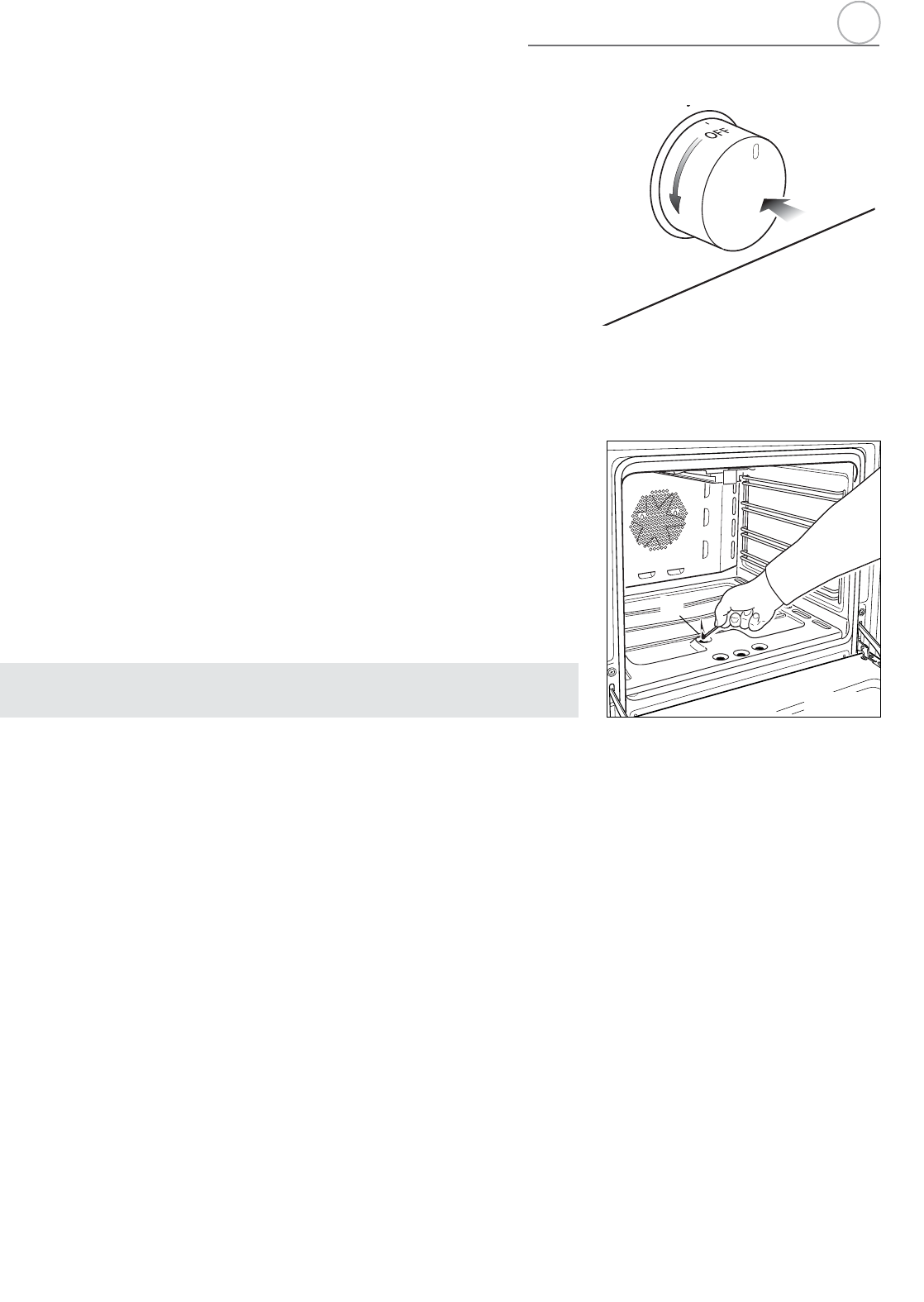
13
Attention: the oven door becomes very hot during operation.
Keep children away.
IGNITION OF THE OVEN BURNER
IMPORTANT NOTE: during ignition of the oven burner the fan motor shall be
switched off (light and fan control knob in
OFF position - Fig. 3.2).
The thermostat allows the automatic control of the temperature.
The gas delivery to the oven burner is controlled by a two way thermostatic tap (oven
and broil burners) with flame-failure device.
To light the oven burner operate as follows:
1) Open the oven door to its full extent.
WARNING: Risk of explosion! The oven door must be open during this opera-
tion.
2) Lightly press and turn the thermostat knob anti-clockwise to max position
8.
3) Press the knob right down to prime the electric ignition. Keep the knob pressed.
In case of power cut, press the knob and immediately approach a lighted match to
the opening “A” (fig.-3.4).
Never continue this operation for more than 15 seconds. If the burner has still
not ignited, wait for about 1 minute prior to repeating the ignition.
4) Wait about 10/15 seconds after the burner lighting before releasing the knob (time
of priming of the valve).
5) Close the oven door slowly and adjust the burner according to the power required.
If the flame extinguishes for any reason, the safety valve will automatically shut off the
gas supply to the burner.
To re-light the burner, first turn the oven control knob to position
OFF, wait for at least
1 minute and then repeat the lighting procedure.
TRADITIONAL BAKING
(OVEN BURNER WITHOUT FAN MOTOR)
Before introducing the food, preheat the oven to the desired temperature.
For a correct preheating operation, it is advisable to remove the tray from the oven and
introduce it together with the food, when the oven has reached the desired tempera-
ture.
Check the cooking time and turn off the oven 5 minutes before the theoretical time to
recuperate the stored heat.
Recommended for:
For foods which require the same cooking temperature both internally and externally,
i.e. roasts, spare ribs, meringue, etc.
A
Fig. 3.4
Fig. 3.3
3


















